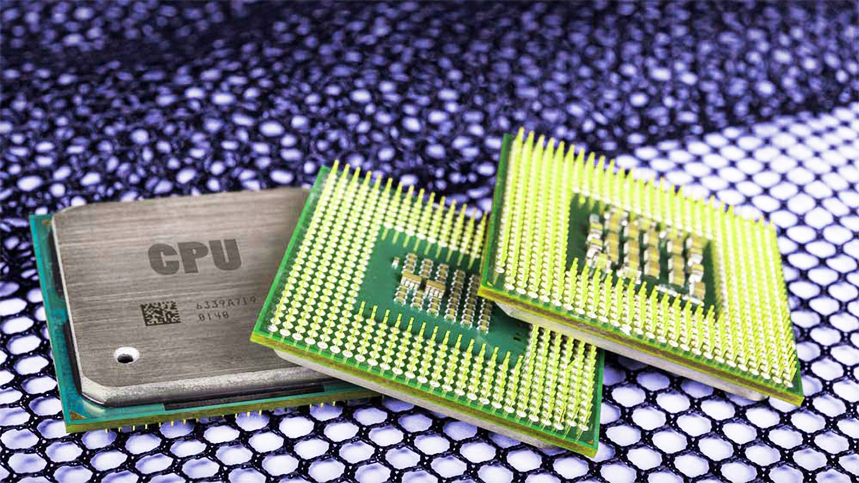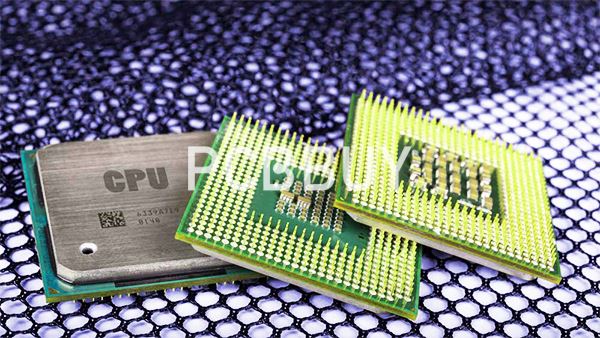What Is Rice Cooker Pcb?
By:PCBBUY 09/05/2023 11:02

An electric rice cooker is a common household appliance that meets people's daily needs by automatically cooking and heating food. The PCB (Printed Circuit Board) in an electric rice cooker is one of its core components, responsible for controlling various functions such as heating, warming, and timing. This article will provide a detailed introduction to the PCB in electric rice cookers.
Components of an Electric Rice Cooker
An electric rice cooker is primarily composed of an outer shell, inner pot, heating plate, temperature control device, power switch, timer, and more. Among these components, the heating plate and temperature control device are the core components of an electric rice cooker.
Common Structure of an Electric Rice Cooker:
A typical electric rice cooker consists of components such as the heating plate, thermal limiter, keep-warm switch, lever switch, current limiting resistor, indicator lights, and socket.
Heating Plate:
The heating plate serves as the primary heating element in an electric rice cooker and is typically made of aluminum. It houses an electric heating tube, and the inner pot is placed on top of it. When removed, you can see the interior of the heating plate.
Thermal Limiter:
Also referred to as a magnetic limiter, it is a device that converts electrical energy into heat energy and maintains a constant temperature. There are two main types of thermal limiters: those made with permanent magnets and those utilizing magnetic materials. The former is suitable for lower-power appliances and consists of a permanent magnet and a spring that can press against the center of the heating plate.

Heating Principle of an Electric Rice Cooker
The heating principle of an electric rice cooker primarily involves using electric current through the heating plate to generate heat, which in turn heats the food inside the inner pot. The heating plate is an electrical heating element capable of producing heat through the flow of electric current. The temperature control device is another core component of the electric rice cooker, responsible for controlling the on/off state of the heating plate by detecting the temperature inside the inner pot, thereby achieving temperature control within the inner pot.
Keep-Warm Switch:
Also known as a thermostat, this switch is commonly found in the control circuitry of household appliances. It features temperature display and control functions, allowing the appliance to operate at a constant temperature.
Heating Element:
Commonly referred to as an electric heater or heating coil, it consists of spring strips, a pair of normally closed contacts, a pair of normally open contacts, and a bimetallic strip.
Lever Switch:
The lever switch is a fully mechanical component with constant normally open contacts. When the temperature rises to a certain level (exceeding the set value), the lever switch automatically opens, connecting the heating element with the temperature limiter. When the temperature decreases to the predetermined value, the lever switch closes, cutting off the circuit.
During cooking, pressing this switch connects the heating element to the power supply, and the heating indicator light illuminates. When the food is cooked, the temperature limiter will pop out, driving the lever switch to disconnect the contacts. Subsequently, the heating element is controlled only by the keep-warm switch.
Current Limiting Resistor:
Appearing in a golden or white color and typically with a size such as a 3W resistor, it is placed between the heating element and the power supply to protect the heating element. Common current limiting resistors are rated at 185°C and 5A or 10A (depending on the wattage of the electric rice cooker).
Induction Coil:
The induction coil consists of a metal outer shell and an insulating material. The outer shell is usually made of plastic, although some are made of copper, which is more expensive and susceptible to damage. The insulating material is primarily made from mica strips. The current limiting resistor is a crucial component for protecting the heating element and can be replaced with a conductor.
These components collectively form the heating system of an electric rice cooker, ensuring precise control of temperature and safe operation during the cooking process.
The PCB of an Electric Rice Cooker
The PCB (Printed Circuit Board) of an electric rice cooker refers to the circuit board within the rice cooker. It encompasses multiple circuits, such as the temperature sensing signal section, temperature signal processing section, temperature control circuit, and display circuit. These circuits typically comprise components like thermistors or thermocouples.
Temperature Signal Processing Section:
The temperature signal processing section acts as the controller for the electric rice cooker. It is responsible for processing temperature sensing signals and converting them into control signals. This circuit usually consists of components such as microcontrollers and amplifiers.
Temperature Control Circuit:
The temperature control circuit is one of the central components of the electric rice cooker. It is responsible for controlling the on/off state of the heating plate. This circuit typically includes components like relays and silicon-controlled rectifiers (SCRs).
Display Circuit:
The display circuit serves as the visual interface of the electric rice cooker, responsible for displaying information about the cooker's operational status, timer settings, and other relevant information. This circuit typically comprises components like LED lights and LCD screens.
These circuit sections collectively enable the electric rice cooker to accurately control temperature, provide user-friendly displays, and ensure efficient and convenient cooking.
Functions of an Electric Rice Cooker PCB
Control of Heating Plate On/Off:
The PCB of an electric rice cooker controls the on/off state of the heating plate to regulate the temperature inside the inner pot. When the temperature inside the pot falls below the set value, the control circuit activates the heating plate, generating heat to raise the inner pot's temperature. Conversely, when the temperature inside the pot exceeds the set value, the control circuit deactivates the heating plate to prevent overheating.
Display of Operational Status and Timer Settings:
The PCB in an electric rice cooker can display information about the cooker's operational status and timer settings. This information can be presented to the user through components such as LED lights or LCD screens, allowing users to easily monitor the cooker's performance.
Implementation of Automation Control:
The PCB of an electric rice cooker can achieve automation control using microcontrollers and other chips. Users can set parameters like heating temperature and cooking time through buttons or other input methods. The microcontroller and related components then automatically control the heating plate's operation, display circuit, and other functions, enabling automated cooking.
In Summary
The PCB is a crucial component of an electric rice cooker, responsible for controlling various functions such as heating, warming, and timing. It comprises multiple circuits, including temperature sensing signal sections, temperature signal processing sections, temperature control circuits, and display circuits. These circuits work together to enable automation control, display operational status, and manage timer settings. When purchasing and using an electric rice cooker, it's important to consider its specifications and safety features. Additionally, proper cleaning and maintenance are essential to ensure its normal operation and longevity.
Industry Category











